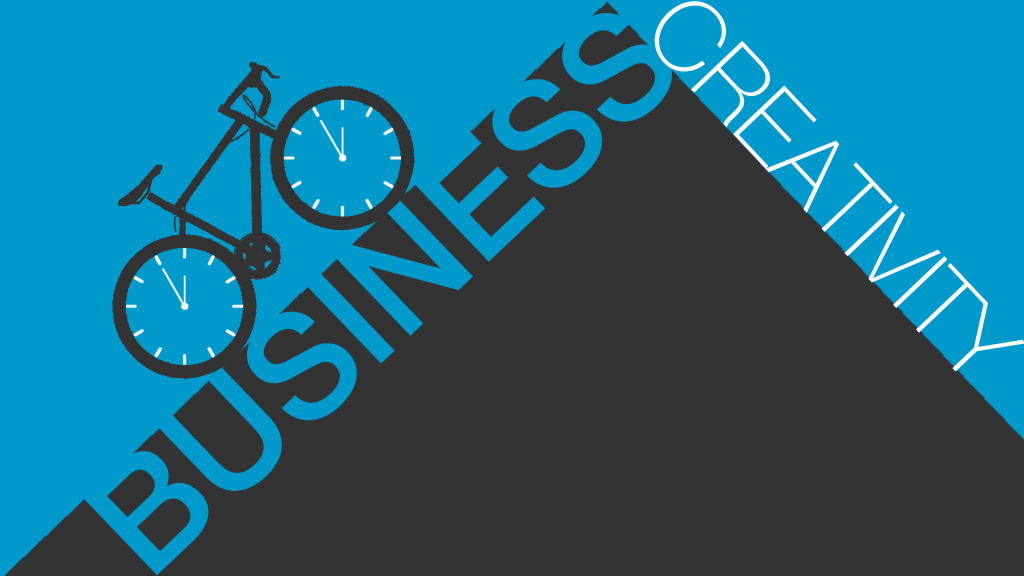
At some point in producing freelance projects for clients, it occurred to me that the actual hard work was not the creative process. Creating the video I was hired for was the part I could breeze through, for two reasons:
- It’s the part I enjoy, therefore time is of no concern. Have you ever been working on a project and eventually checked the clock, only to realize you hadn’t eaten or moved in 8 hours? This didn’t happen because you were pissed or bored; it happened because you were engaged and doing some part of what you love.
- It’s the part my instincts are most finely tuned for. When you’ve done something long enough, you learn to trust your impulses. Your trained eye refines instinctual work later. This level of experience becomes the thing that differentiates amateurs from professionals.
The bad news for all you freelancers or B2B (Business to Business) services is that the thing you’re hired to do is only a small part of the job. Your creativity is the reason clients want you and trust you’ll deliver. But, there’s a whole world of communication that has to happen between being hired, and delivering.
Your art is not your job—it’s the thing you get to do after the part that feels like “work.” Let’s dive into a quick session of freelancing 101.
FREELANCING + MANAGING EXPECTATIONS
It’s 80% of your freelancing job. The primary reason I’ve lost clients in the past is strained communication. Those clients with whom communication is clear, concise, and heavily focused are those I’ve continued long and fruitful relationships with.
Most freelancers make the detrimental mistake of thinking their work alone will open gates and speak for itself. In the era where anyone can buy a decent camera and make something pretty, clients are more aware than ever that their sixteen-year-old nephew who will work for free could easily replace paid freelancing talent. So what separates you?
YOU HEAR YOUR CLIENT
Most freelancers enter meetings with new/potential clients with a plan or proposal. They have already outlined a vision or concept, which is important.
But, think about this: in the dating world, you meet someone for five minutes at a party and decide to go out to dinner. At your first dinner date, if you immediately unveil plans for your future together (marriage, babies, investments, retirement, etc.), I can almost guarantee there will be no second date. In most cases, it’s kind of painful to imagine this interaction.
This behavior would be off-putting because you’re ignoring your date, their desires, and their goals before taking any time to get to know them.
You have to court your clients! Good freelancing requires a few dates, or at least one in-depth conversation before committing to the relationship. You need to ask comprehensive questions and, most importantly, just listen. Don’t walk in married to a predetermined notion of what to do. Instead, walk in with confidence in your skills, spend the time learning about the client’s needs and vision.
This is why Sterling and Draper are always out schmoozing with “the client.” Well, partially, anyway. That degree of comfort lends itself to trust, and the trust of a client gives you insight into who and what they stand for.
Should you go get hammered with your clients? Absolutely not. But you should make them feel comfortable and be attentive to what their end goals are. It gives them security in your relationship, and inevitably saves you a lot of time and guesswork.
Why wrack your brain coming up with ideas and approaches for what your client could or should be doing, when you can simply ask them what they ultimately want to achieve, how they wish to be seen, and how you can help? If you pay them this sort of attention, they’ll feel empowered and your suggestions will be better received.

PUT CLIENTS AT EASE WITH YOUR COMPETENCE
When clients meet a potential freelancer, their most likely preoccupation is, “Can this person do the job I need?” Your personality and articulation will answer this more than your reel.
“Fake it ‘til you make it” is often invoked here, but I would say, “Fake it ‘til you make it, within reason.” You should never lie your way to the top, but setting a bar for yourself that’s slightly higher than your current abilities can force you to deliver.
Maybe your work speaks for itself, but I still like to approach new clients from this perspective: “They don’t know who I am, or anything I’ve done. Even if I sent them my work in advance, they most likely didn’t watch it.”
This approach is more conducive to making clients comfortable because I’m forced to sell them my abilities. It’s especially beneficial if I’m attempting something new, with little track record.
Selling oneself does not equate to bragging. Don’t be that a*****e who shakes your potential client’s hand, sits down, and starts rolling out a list of accomplishments. That a*****e sucks.
There’s no single right way to have these conversations, and it often depends on the individual you are talking to. If you’re an anxious person by nature, you’ll likely over think any meeting. But, while perceptions are subjective, exploring them is helpful to gauge the amount of “selling” you’ll have to do. Here are some questions you may want to mentally answer while interacting with your potential client:
What is their disposition?
How comfortable do they seem?
How open is their communication?
How enthusiastic are they about speaking with you?
How much have they referenced the work you sent them (if you had that opportunity)?
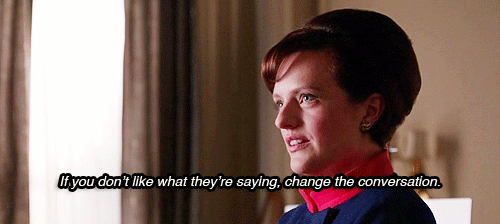
The most important thing to remember is: keep the conversation as comfortable and fluid as possible. Most clients hate false modesty as much as they see through arrogant sales talk. Keep your interaction natural and be sure to address any concerns the client vocalizes or alludes to. Your objective is their comfort, which sometimes necessitates you being a little uncomfortable. This comfort leads me to:
YOU’RE COMPATIBLE
Clients look for people they can work well with. I can’t tell you how many hyper-talented people I’ve met who could not get gigs to save their lives because they’re awkward to interact with. I would venture to guess, being rude or visibly uncomfortable are among the top reasons a person may lose opportunities.
Now, I’m no bully: awkwardness and alienating behavior come in many forms. When a client sees their potential freelancer is too cocky or unwilling to budge, jobs get lost. Pretension and over-assertion kill interactions. So do timidness and lack of confidence. The comfort you work to instill also serves to illustrate the quality of working relationship a client can anticipate.
I find three things very helpful to remember in setting this tone:
- To the potential client, you’re an expert in your field. Don’t go out of your way to seem like an expert. They called you, or responded to your outreach. They would not be interested if they didn’t believe you were capable, so be respectful and grateful.
- Be generally polite. Everything you learned about etiquette applies here, whether you like it or not. If you’re not aware of etiquette, watch Pretty Woman. Be the best and most respectful version of yourself. You owe that to people in general, but certainly to people whose respect you’re seeking. Table manners, conversational manners, dressing clean—these things are important. Deflate stereotypes of what an artist is, and meet clients where they are.
- For the first ten minutes of your conversation with a potential client, your job is to find one piece of common ground you share. This is arguably the most helpful thing, and it is definitely my secret sauce. If they mention travel, and that’s something you enjoy, riff on it. If they bring up their Golden Retriever, Eddie, and you also have a dog with a typically human name, you now have some extra runway. The point of this is relaxation. Once you’ve identified commonalities, both parties are fully aware that the other is human and can be spoken to outside the realm of formality. Keep it classy, and know that, if it works, you’ve broken down a massive wall. IMPORTANT NOTE: As the stature of your clientele grows and you begin working with higher profile individuals or institutions, this step gets increasingly difficult. The higher you climb on the food chain, the more inaccessible people become. Stay the course and don’t let this shake you. Find the balance between trying to relate, and knowing when to get on with business.
Overall, be the best you possible, and allow the client or prospect to feel comfortable being the best them.
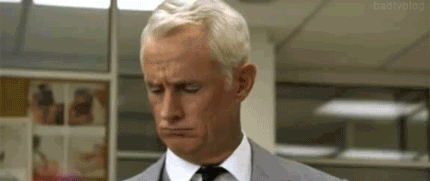
INSIST ON CLARITY
A common mistake among freelancing folks and clients alike is to assume the opposite party is fully aware of your intentions. Never presume you know what the other party is thinking. I’ve learned this the hard way.
Early on in my freelancing career, I had a client who gave me full creative control over a promotional video they’d hired me to do. I naively took this as a ticket to ride with no questions asked. I requested a budget, it was granted, and I put together something I thought was great!
As production plugged along and we hadn’t heard much from each other, the client grew antsy and wanted to see some version of a product. I showed them a rough cut (which is always tricky) and they were so dissatisfied that they pulled the plug. To their credit, they had every right to!
I’d assumed full creative control meant they were open to anything new, but I neglected to probe deeper on their initial vision for their product, or to be clear on mine. The result was a piece that didn’t fit their end goals, and was very rough around the edges. The months to follow were shrouded in figuring out money issues between us, and patching up the damaged relationship.
Sounds terrible, right? Well, I’ve heard this story from many freelancers since. It’s unfortunately very common. Always assume you know nothing and keep the client in the loop.
As per the Mad Men reference earlier on, there are generally people in an agency setting who own this communication. And there’s a reason why: it takes a lot of work for a single person. Insisting on clarity really ties everything I’ve written here together—it’s the thread between managing expectations, hearing your client, ensuring your competence, and working in a compatible way.
If a client assumes they know how you work, and you never take the time to clearly explain how your deliverable, you’re destined for a showdown. Conversely, if you assume you know what the client wants and needs without ever consulting them, you are setting yourself up for inevitable frustration, wasted time, and possibly rejection. Don’t be a pest, but it is important to be clear.
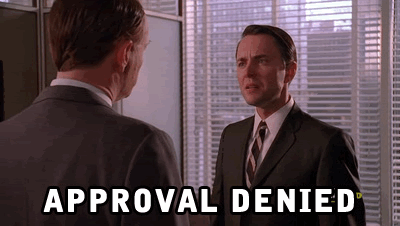
Clarity comes in two forms:
- Clarify your understanding. Clarifying to your client that you fully grasp their vision and their needs opens you up to offer professional opinions on improvements, while ensuring that your own decision making process has a foundation in what the client wants. At every unexpected turn in the road, every time a client proposes a new course, and every time new information comes to light, clarify back to the client how you perceive this change affects the overall plan.
- Clarify your client’s understanding. This one’s pretty simple: as the project evolves and you see a need for changes, be sure your client fully understands how each suggestion you make affects the final product. It’s theoretically simple, but actually takes a good deal of effort. Articulating the full scope of your vision, repeatedly adapting for new additions and how they effect the greater work can be difficult. But put in the work and be sure your vision correlates with theirs.
The main purpose of insisting upon clarity is to minimize surprises. I’ve seen good surprises destroy working relationships. The client may have been happy with the overall product, but the fact that it changed without their knowledge made them reticent to return for more business. Rightfully so.
Minimizing surprises makes for a comfortable and validating delivery, relaxed clients, and often repeated business. People value trust because it’s difficult to find. Many people lie in business because truth-telling is hard and time consuming, and the possibility of rejection scares them.
Rise above that. Be clear and your clients will notice. Respectfully hold them accountable for their own clarity so they know you care about the work, the relationship, and them.
THE TAKEAWAY
If you take care to make the client comfortable at every stage of the process, clearly outlining your plans, attentively listening to their needs, incorporating those needs into the language of your work, keeping them at ease with your vision—both efficiency-wise and creatively—and, lending an open ear to their desires, you foster a match made in freelance heaven.
Relationships are difficult. They take time and attention, and sometimes even require amicably splitting in hopes of finding a better fit. When you operate with respect and dedicate yourself to creating strong working relationships, you create longer-sustaining work, more pleasing processes, and often gain great references.
These relationships demand the most work up-front, but over time all parties will grow accustomed to one another. This is when communication becomes effortless and your creative work begins to take the front seat!
Do you have any tricks for maintaining strong relationships with your clients? Tell us about them in the comments below!
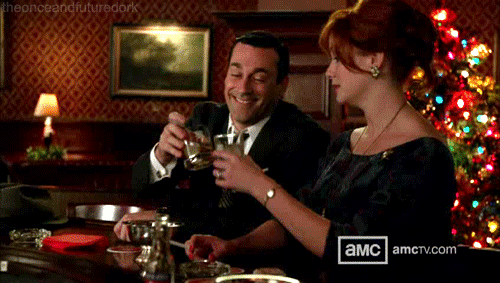
I agree 100% with the importance of managing expectations, I’ve written posts on this as well. It’s almost as (if not more) important as the actual work you’re doing.
Clarity and being on the same page with the client is the formula for happy customer and happy freelancer.
Thanks, Mike! Managing expectations is crucial—not just to a cohesive working relationship, but also to a long-lasting one.
Where can I see your posts? Would love to check them out!
Ah, didn’t see your reply till now! You can see my posts at http://mikecavaliere.com/blog .
Here are some posts that are loosely related to the topic. Let me know what you think!
What Your Client REALLY Wants
http://mikecavaliere.com/what-your-client-really-wants/
Don’t Eat The Candy
http://mikecavaliere.com/dont-eat-the-candy/
Ethics for Freelance Programmers
http://mikecavaliere.com/ethics-for-freelance-programmers/
The Importance of Saying NO
http://mikecavaliere.com/the-importance-of-saying-no/
Great stuff, Mike! Thanks for sharing 🙂
I’ve been freelance for 16 years. So when I go to new business meetings I never present any achievements or track record. They’ve checked me out on the net and/or have a personal referral. So I get straight in with the first question, which is always along the lines of ‘how can I help you?’.
Once they start talking about themselves and their problems that need to be solved, there are plenty of ways to demonstrate competence merely by suggesting solutions, providing examples where solutions have worked etc. By the end of the meeting, if you don’t have some kind of collaborative concensus, you aren’t going to get the job.
Paul,
Absolutely true. Good relationships with clients can’t be forced. They need to grow organically and the best way to stimulate that is by listening and demonstrating you can solve THEIR problems, not those of past clients.
Great input!